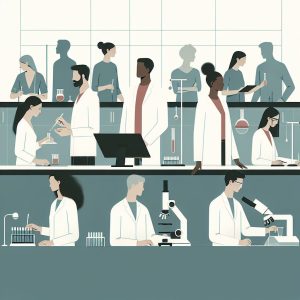Scientific Planning and Proposal Writing using GenAI in Research

Institution: University College Cork
Discipline: Research
Author: Susan Joyce
GenAI tool(s) used: ChatGPT
Situation / Context
BC6004 is a postgraduate optional module aimed for students in higher degrees (Masters or PhDs by research). It aims to teach students the finer points of why, how, and what are important in the gathering and constructing of scientific information for theses, publications, and grant proposals. The classes are interactive and require continuous work submission and reflection.
CHAT (ChatGPT) is a GenAI tool that can be applied to scientific writing, information gathering, and reassembly. We applied it in the mid–phase of the module as a tool of support, but with caution, during these interactive small group (six students) 5×4-hour learning sessions. The benefit of fact and reference collection, formation of a good knowledge base, review of a scientific subject to include opinions, hypotheses and to identify gaps in the (higher level) learning is encouraged.
A summary title is formed. AI–generated information and tools are independently applied and compared on the topic in class.
Task / Goal
The primary aim was to ensure awareness of the correct and incorrect use of GenAI to support scientific writing. A secondary aim was to ensure that EU and International postgraduate students were aware of the pitfalls and benefits of utilising a commonly used GenAI resource correctly. A third aim was to ensure awareness and insight into the debate on the topic of GenAI and its future uses.
In this small group learning setting, students used their selected and thoroughly researched topics and titles. They applied the resource over one session, interactively with the GenAI and in real-time. Each student applied the tool to their own pre-researched work and discussed the positive and negative outcomes collectively. The time for this session was three hours.
Actions / Implementation
The students constructed a name and an abstract, without GenAI, based on prior knowledge and referenced material; they were limited to 200 words.
Most students were over the word limit and had not constructed an acronym. Our first act was to use the abstract to generate a title for the proposal and examine whether it reflected the main aim and abstract contents. As scientists, we tend to apply titles that are overly detailed when a simpler title could suffice.
The abstract was applied to generate an acronym for each proposal in real-time. For example, the title “Development of an RNA expression system for tackling HER2 Cancer” returned a very apt acronym of RNA HERo. Following this, we tried the following:
- Requested that the abstract be condensed to 200 words and explored whether the relevance was maintained for each of the 6 individual students.
- Submitted the title and asked ChatGPT to generate an abstract for the topic without supplying any input information.
- Submitted the technical WPs and asked for Table construction.
- Wrote a request for a letter of Support and submitted it for different levels of formality to ChaGPT.
Outcomes
The GenAI tool–generated titles were collectively examined and discussed relative to the student’s proposed original title. With two exceptions the GenAI generated were deemed appropriate and, in some cases, better.
The GenAI–generated acronym for each project was really spot on – this delighted the students- as one could spend a lot of time thinking about a suitable acronym, GenAI–generated numerous options.
Within-word-limit abstracts were GenAI constructed from the input. In discussions, some important points could be misrepresented or indeed, lost. However, the group agreed that GenAI–generated abstracts were useful and could be improved further by individual review.
Each student submitted the GenAI–generated title, requesting the tool to generate 200 words on the subject. Students rejected this approach based on the inaccuracy of facts and of referencing, collectively deciding that it was too general to provide real topic insight. Students developed trust in their own intellect and ideas rather than GenAI–generated information. They concluded that the GenAI tool was useful as a text, tone and grammar rearrangement tool, a supporting tool rather than an intellectual connecting tool, for the whole work package.
The students agreed that the tables were constructed excellently.
In discussions on writing a Letter of Support, students agreed that GenAI opened other unconsidered avenues that could be included in the letters so that GenAI could be delivered here.
Reflections
As a group, in discussion and real-time application, the students and I realized and concluded that: original scientific thinking is not a function of Chat GPT. This tool is no substitute for thought and reflection in generating original work, ideas, and hypotheses. However, students concluded that reorganisation, condensing, and getting perspective on Letters of Support, acronyms and general time-saving tasks demonstrate its excellence in its application as a GenAI tool.
However, we all agreed that human writer information scoping, gathering, and analysis were essential in advance to optimally apply GenAI for beneficial outcomes. The aim was to inform students on the benefits and pitfalls of specific GenAI usage in a science context, for proposal, paper, and award writing.
The students and I appreciated and acknowledged GenAI’s time-saving ability and its potential benefits for neurodiverse individuals, those for whom English is not a first language, and native English speakers themselves.
Author Biographies
Dr Susan Joyce is the Director of MRes Programme and PI and a Senior Lecturer at the School of Biochemistry and Cell Biology at the University College Cork.

